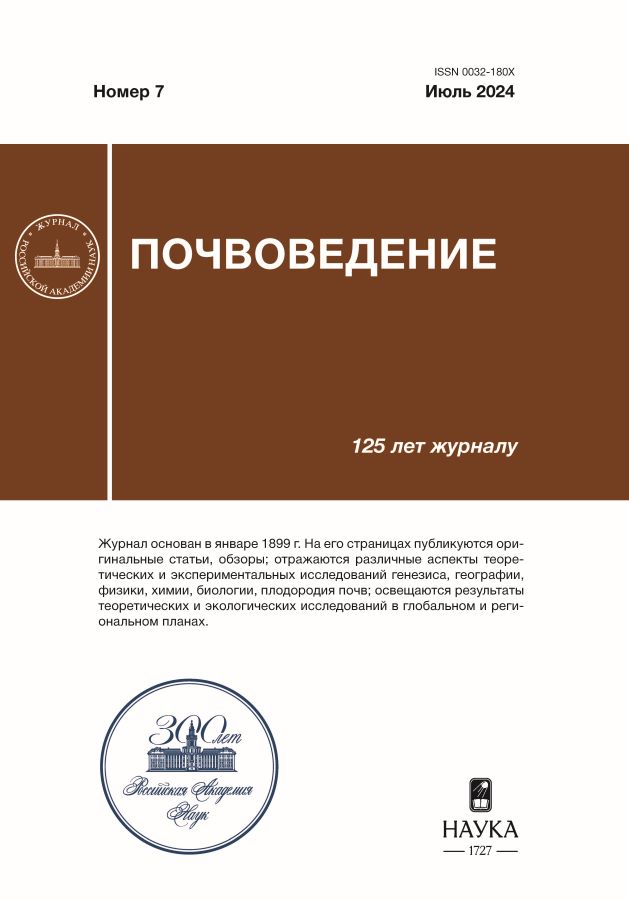Composition and Genesis of Polyarenes in Soils of Various Aged Durnt Areas in the Baikal Nature Reserve
- Authors: Koshovskii T.S.1, Gennadiyev A.N.1, Gamova N.S.1,2
-
Affiliations:
- Lomonosov Moscow State University
- Baikalsky State Nature Biosphere Reserve
- Issue: No 7 (2024)
- Pages: 968-982
- Section: SOIL CHEMISTRY
- URL: https://stomuniver.ru/0032-180X/article/view/666617
- DOI: https://doi.org/10.31857/S0032180X24070049
- EDN: https://elibrary.ru/XVGQWC
- ID: 666617
Cite item
Abstract
The article presents data on the content of eleven polycyclic aromatic hydrocarbons (PAHs) in soils under burnt areas of various ages, single and repeated, in the taiga landscapes of the middle mountains of the Khamar-Daban ridge. Morphological features of soils inherited from the fire were identified, such as: layers of coals (pyr), ashes (Cpyr), charred forest litter (Opyr) and pyrogenic humus horizon (Apyr). The post-fire variability of the soil cover, formed due to the presence of areas inside the burnt area with six degrees of burning of forest litter material, is characterised. A decrease in the content of PAHs has been shown with an increase in the intensity of the fire, as well as in the case of repeated fire on the already burnt area. Background soils have a higher content of PAHs compared to 42-year-old burnt areas and to areas of intense burning in one-year-old burnt areas. By factor analysis, four groups of PAHs were identified, differing in origin: polyarenes of pyrogenic autochthonous origin, formed in situ – naphthalene, tetraphene, pyrene, chrysene, anthracene, naphthalene, and to a lesser extent benzo(a)pyrene, and benzo(ghi)perylene; a group of polyarenes of pyrogenic allochthonous origin that accumulate in soils due to atmospheric transport of ash – benzo(a)pyrene and benzo(ghi)perylene; a group of polyarenes of biochemical origin – fluorene and biphenyl; polyarenes of biochemical and petrogenic origin, accumulating at the depth of the soil – phenanthrene.
Full Text
##article.viewOnOriginalSite##About the authors
T. S. Koshovskii
Lomonosov Moscow State University
Author for correspondence.
Email: tkzv@ya.ru
Russian Federation, Moscow
A. N. Gennadiyev
Lomonosov Moscow State University
Email: tkzv@ya.ru
Russian Federation, Moscow
N. S. Gamova
Lomonosov Moscow State University; Baikalsky State Nature Biosphere Reserve
Email: tkzv@ya.ru
Russian Federation, Moscow; Tankhoy
References
Supplementary files
















